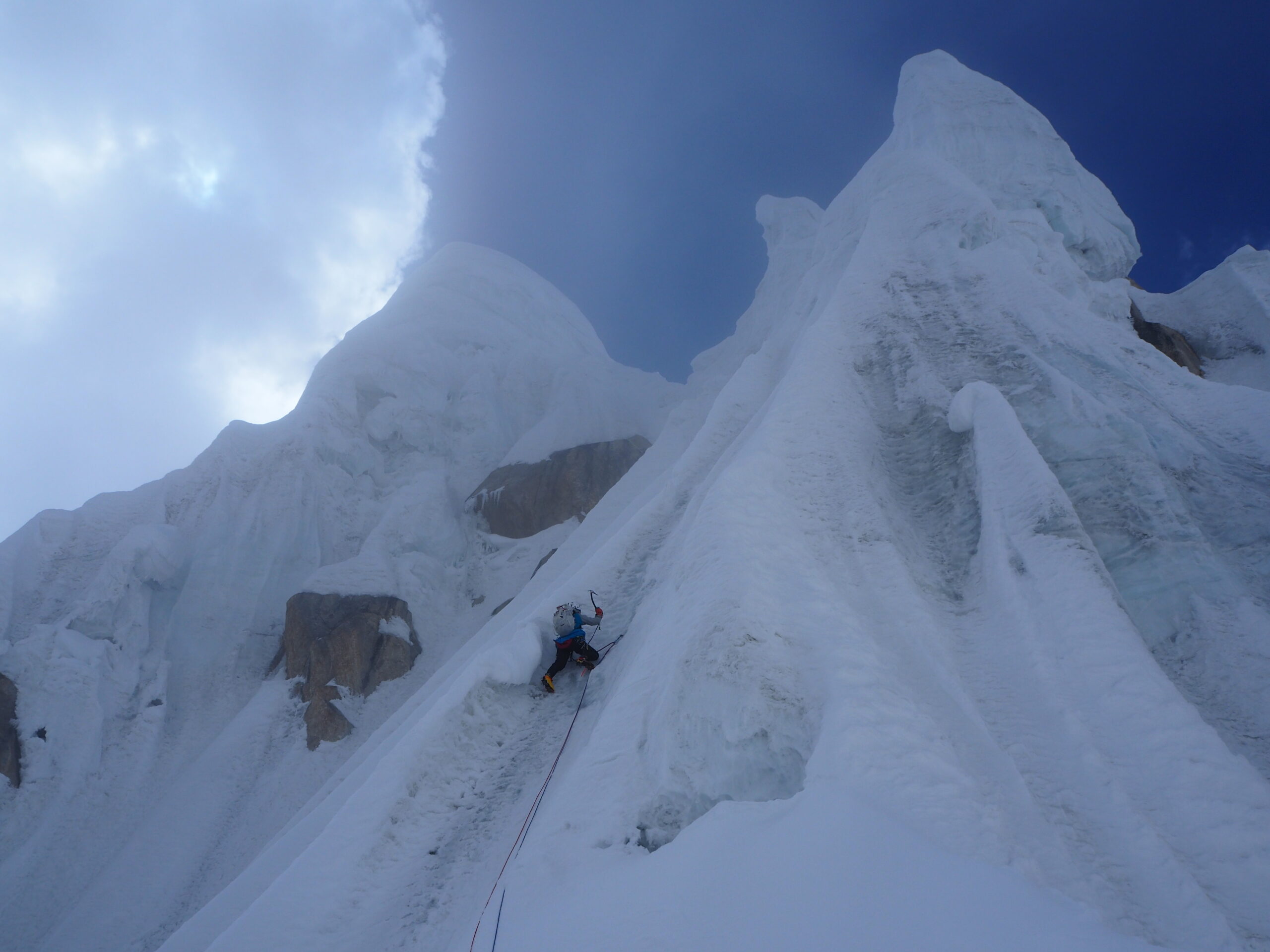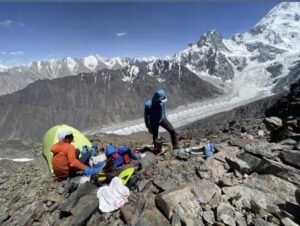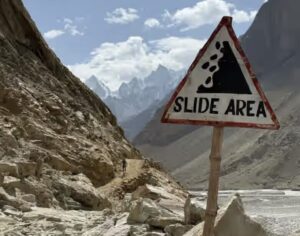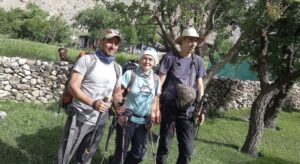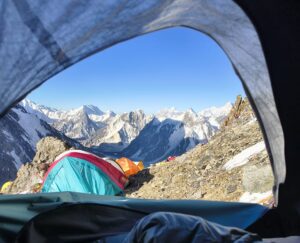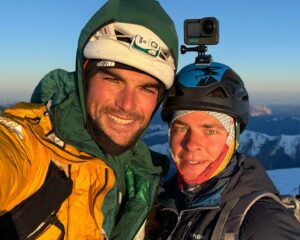Earlier this season, Zdenek Hak and Radoslav Groh made the first ascent of the southeast face of 6,300m Hunza Peak in the Karakoram. The Czechs’ new route rises 2,300m from base to summit and reaches 90º of steepness. They proposed a grade of 5+UIAA, M6+, WI5 for their new line, which they called Eid al Adha.
The climbers posted some photos and a couple of sentences right after the expedition, but here is a complete report of how the pair reached what they called one of the most beautiful summits they’ve ever stepped on.
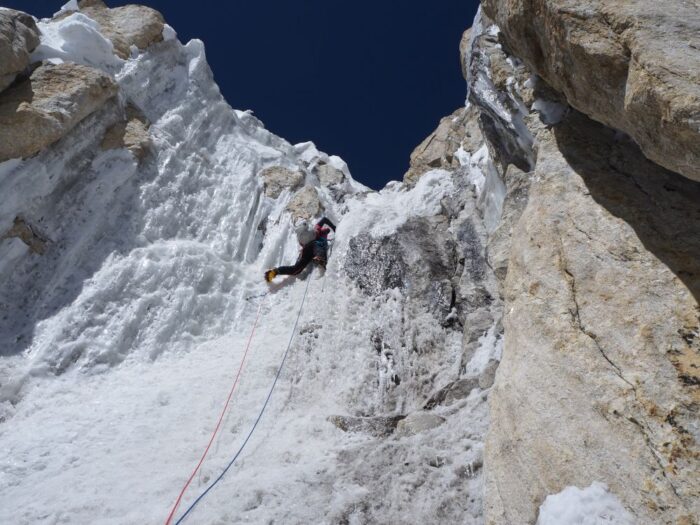
Hunza Peak reminded the climbers of Patagonia. Photo: Z. Hak
Promoted to main goal
This is not Hak and Groh’s first rodeo; the pair are regulars on our best expeditions of the year list. They had first set their sights on Hunza Peak in 2024 as acclimatization for an even more ambitious project — the first ascent of 7,453m Muchu Chhish, then the highest unclimbed peak in Pakistan. Their successful climb was ExplorersWeb’s top expedition of 2024.
“Unfortunately, we had to cancel the attempt [on Hunza Peak] due to my illness and focus solely on the main target of that season, Muchu Chhish,” Hak told us. “Nevertheless, we left at the bottom of the southeast face of Hunza Peak not only our equipment but also our dreams, desires, and commitment.”
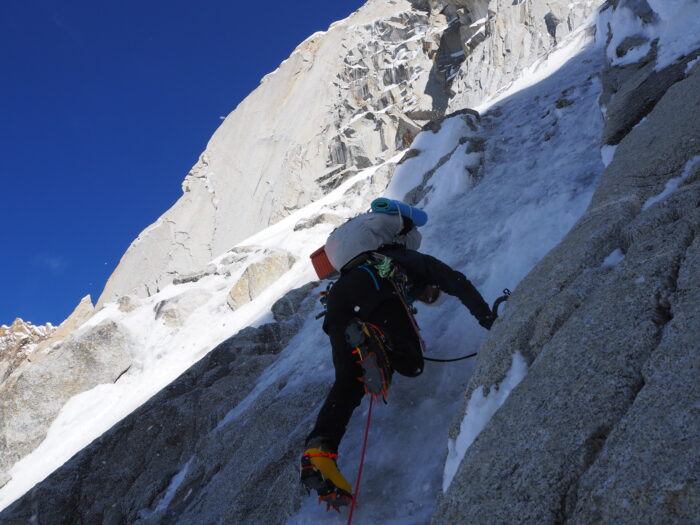
A section of mixed terrain. Photo: Hak/Groh
When Jaroslav Bansky, the third man on the Muchu Chhish team, dropped out of projects for 2025, “Radoslav Groh and I agreed not to attempt any extremely high mountain and to return to Hunza Peak instead,” said Hak.
The duo arrived in Pakistan on May 20. They knew they wanted to try the unclimbed south face and had also seen a possible route to the summit.
“The only goal this time was to acclimatize well and wait for favorable conditions and weather,” the climbers said.
The right conditions
The right conditions came on June 6. Hak and Groh set off toward the face, with 3,000 vertical meters ahead of them to the summit. Of this, 2,300m required technical climbing.
However, even the approaches to the climbing sections were not easy. Nearly one meter of fresh snow had recently fallen.
“It was quite tough to fight our way through,” they admitted. “Also, in between the gullies, there were also rock sections of 5+.”
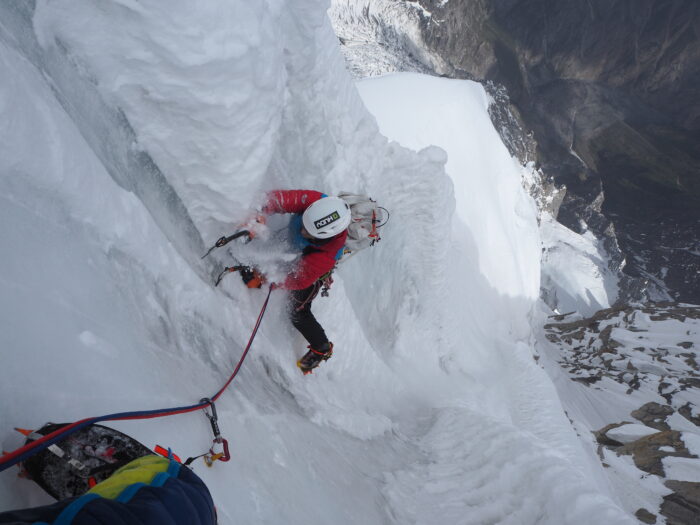
On difficult ice gullies on Hunza Peak. Photo: Hak/Groh
The climbers pitched their tent for the first night on the glacier at 4,500m.
“The next day, we just managed another 600 vertical meters. Already at 10 am, avalanches were falling all around us,” they explained. “It was so dangerous we had to set a second bivouac right then.”
The third day, Hak and Groh climbed 800 vertical meters of steep snowy or mixed terrain to 5,900m.
“We worked hard to dig a small platform for our tent,” they said.
On the following morning, they launched their summit push:
The summit day
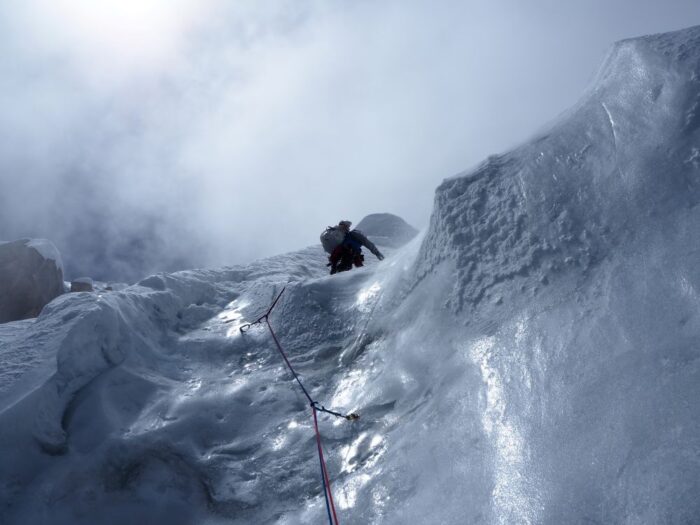
Climbing a technical ice section. Photo: Z. Hak
On June 9, we left the tent and all the equipment at our last bivouac so we could go light. The first M6 pitch warmed us up, and we continued through a firn couloir with 20m of perpendicular ice. Once we got over it, we climbed tediously up to the top serac…There was no way further, so we rappeled leftward into the central couloir and then we climbed back up, until a shoulder right below the summit.
From there, we just had to overcome a 50m high ice/snow tower with a ‘mushroom’ on top just like a summit in Patagonia. It was beautiful and spectacular climbing with a lot of exposure! One of the most beautiful I have ever experienced. There was not enough place for both of us on the summit ridge so we had to take turns. We even dug a hole in the snow and looked through to the other side. Amazing experience! I have not been on such an extraordinary summit before.
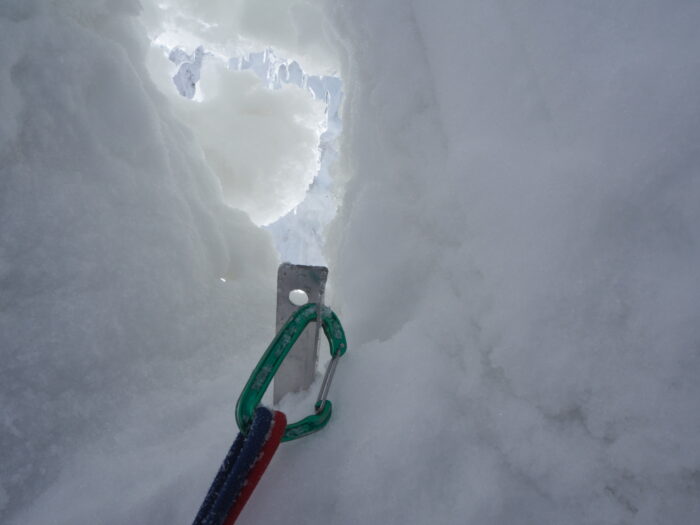
The hole carved through the summit ice. Photo: Hak/Groh
They descended by rappelling down the same route they had climbed, resting for the night in Camp 3. They made it back to Base Camp on June 10.
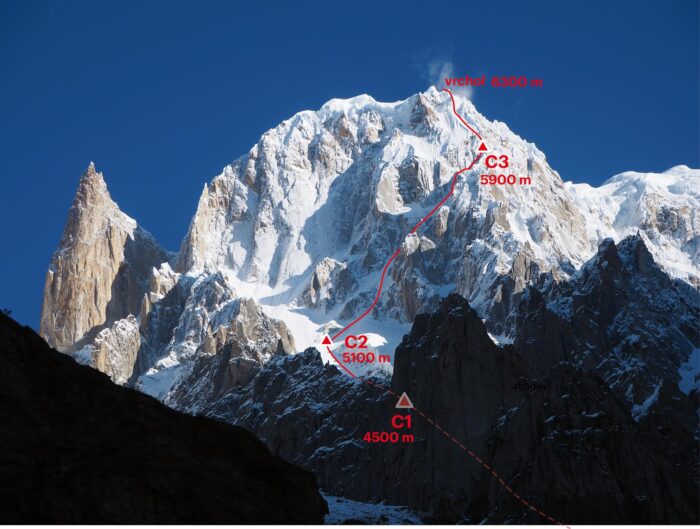
Topo of the new Czech route on Hunza Peak. Photo: Zdenek Hak
Hunza Peak lies at the head of the Hunza Valley, in the Batura Muztagh range. Several alpine-style teams visited the area earlier this season, with some success. The American expedition on neighboring Ultar Sar, for example, bagged the first ascent of the southeast pillar.
Pecking order
In several of the pictures shared by the team, Groh’s helmet is seen severely damaged.
“Nothing serious,” Hak explained. Apparently, it was not from a falling rock or a chunk of ice. For some reason, the local birds enjoyed pecking at the helmet when they found it in a gear cache.
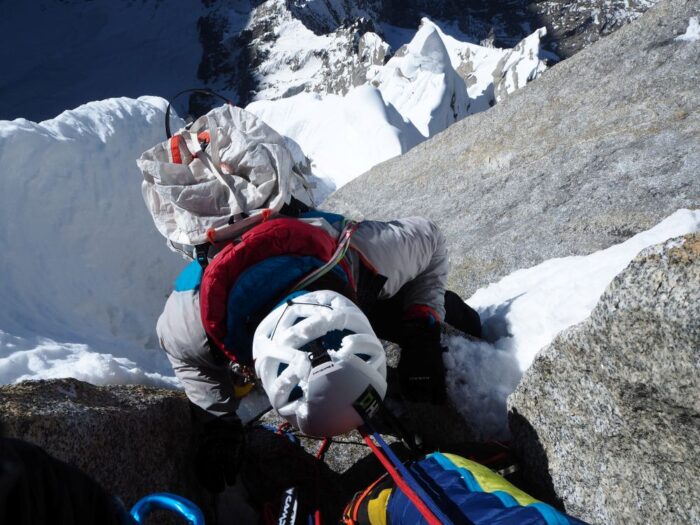
Radoslav Groh with his damaged helmet on Hunza Peak. Photo: Zdenek Hak
